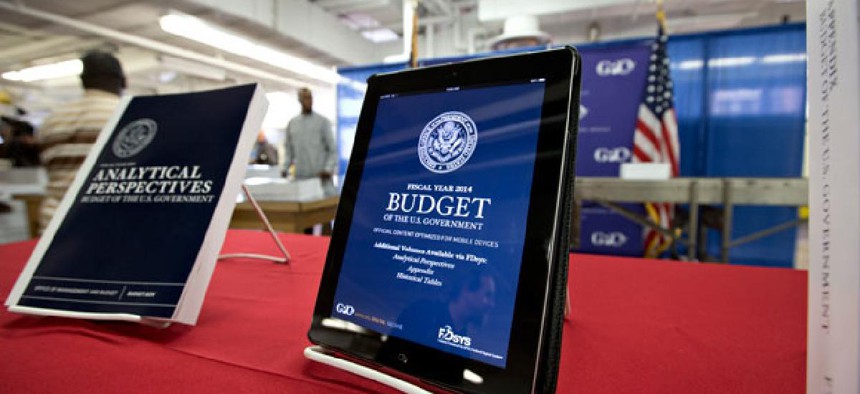What to Expect in Obama’s Budget
The White House is unveiling its 2014 spending plan on Wednesday.
If the budgets passed by Senate Democrats and House Republicans offered up competing worldviews, then President Obama will add a third entry to the mix on Wednesday as the White House unveils its spending plan for fiscal year 2014.
The major headline news is already known: Obama will offer to make cuts to Social Security benefits, as he did during the fiscal-cliff negotiations with Republican House Speaker John Boehner.
But, apart from the president’s plan to formalize cuts that he has already proposed, what else can Americans expect from a budget that’s roughly two months late and that follows both parties’ congressional budget proposals?
ON TAXES: Obama will stick to his tax-the-rich theme in this budget, a political idea that helped him win the 2012 election and caricature his opponent, Mitt Romney, as an out-of-touch, country-club Republican.
On the individual side of the tax code, senior administration officials have said that the president will propose a 28 percent cap on itemized deductions for wealthy people, reviving this idea from his fiscal 2013 budget plan. There is one difference this time around. The fiscal-cliff deal made permanent the majority of the 2001 and 2003 tax cuts and, as a result, defined “wealthy people” as those with a household income above $450,000 a year ($400,000 for an individual). This means the capped deduction will not draw as much revenue from taxes, though that may not matter as much because the cliff deal also raised $600 billion in new revenue over the next decade.
The capped deduction highlights one of the few areas of agreement between the two parties on tax policy. That’s the need to reexamine tax expenditures, breaks that cost the government more than $1 trillion a year. The Senate Democrats’ budget called for limiting or eliminating tax expenditures for wealthy people to raise additional revenue, while the House Republicans want to get rid of unspecified tax breaks as a way to lower overall rates and simplify the tax code.
Both congressional proposals were far too vague, but the various budgets—including the president’s—point to a common target and potential area of compromise on tax policy, if and when Congress tackles tax reform.
ON SPENDING: The president’s budget blueprint is expected reflect the new reality that Congress simply will not pass any new stimulus money unless it can find a way to pay for it. Already, nondefense discretionary spending as a share of economic growth is on track to hit a historic low by 2017. The president’s blueprint will keep this script of reduced spending alive.
One new idea—to create more free pre-kindergarten programs for states—would be paid for by raising taxes on tobacco. This echoes a similar spending strategy that the president outlined in his State of the Union address, during which he also proposed raising the minimum wage—an idea in which the higher costs fall to the private sector rather than the federal government.
In the post-fiscal-cliff and sequester era, that may be the only way to propose any new spending programs: find a way to avoid the government having to pay for them.
ON BALANCE: The Obama blueprint will not balance the budget in 10 years, as the House Republican plan purports to do.
This remains a key area of disagreement between the two parties: the necessity of balancing the budget in a 10-year window by cutting spending, transforming social safety-net programs, raising taxes, or implementing some combination of these strategies.
Democrats argue that stabilizing the debt over the next decade goes far enough, especially as the economy continues to recover and unemployment remains high. Republicans, led by House Budget Committee Chairman Paul Ryan of Wisconsin, have argued that failing to balance the budget in 10 years will lead to such high spending levels that it will crowd out money for any other programs apart from the entitlements.
This remains the major sticking point in this round of the budget battles between the two parties—and Obama’s late entry into the budget fray is unlikely to offer a solution.
This article appeared in the Tuesday, April 9, 2013 edition of National Journal Daily.







